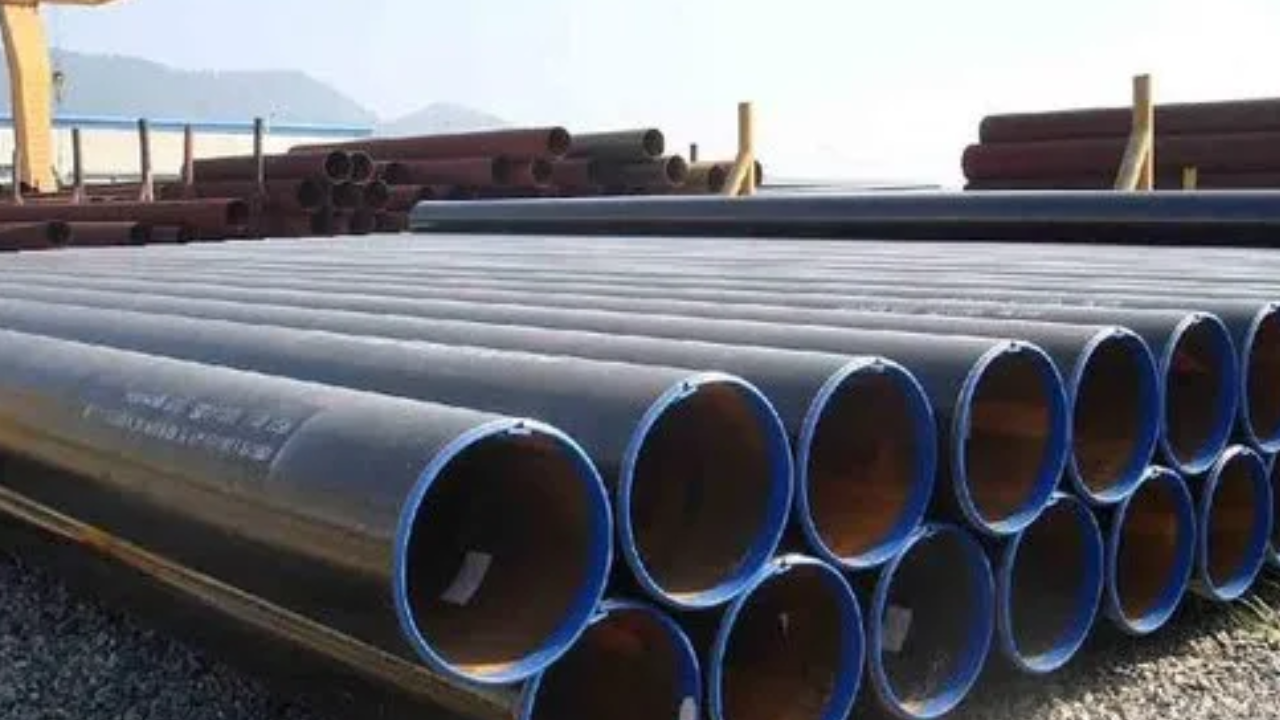Steel pipes used to transport liquids at a range of temperatures and pressures are covered by the API 5L standard. Numerous kinds of steel pipes, including ERW steel pipes, seamless steel pipes, LSAW steel pipes, SSAW steel pipes, and API 5L X56 Line Pipe are produced using the API 5L X56 steel grade. A steel grade with enhanced mechanical characteristics and strength is API 5L X56 material.
Usually, it is employed during the manufacture of steel pipes for the transmission of gas and oil. The aforementioned steel type is perfect for use in applications requiring high pressure because of its enhanced durability. There are two kinds of X56 material: PSL-1 and PSL-2. PSL-1 is the grade that is most frequently utilized, although PSL-2 typically gets used in higher pressure.
Petroleum, oil, and gas are commonly transported using API 5L X56 line pipes, which are of a common grade. It is additionally referred to as L390 pipe, which stands for pounds per square inch, the unit of measurement for its minimum yield strength. API 5L X56 line pipe is utilized in the building industry for tasks like piling along with the transportation of fuel, oil, and gas.
Key Aspects of API 5L X56 Line Pipe
API 5L X56 line pipe is a great choice for a variety of applications due to its resilience and adaptability. Here are certain features of this Line pipe like;
High-quality Strength
API 5L X56 Line Pipe boasts superb electricity and durability, making it properly appropriate to be used in challenging environments and below excessive stress. Its potential to withstand pressure and pressure for the duration of transportation and extraction techniques within the oil and gasoline industry contributes to its dependability and sturdiness.
Corrosion Resistance
Corrosion is a huge challenge in the oil and gasoline enterprise due to the nature of the transported materials. API 5L X56 Line Pipe is designed to withstand corrosion effectively, safeguarding against untimely deterioration and ensuring the integrity of the pipeline gadget.
Uniform Chemical Composition
Uniformity in chemical composition is a vital issue of API 5L X56 Line Pipe. The consistency in composition enables predictability in its behavior, facilitating green design and engineering of oil and fuel infrastructure.
Effect Resistance
API 5L X56 Line Pipe is famous for splendid effect resistance, which is a precious attribute for pipelines that may stumble upon outside effects, consisting of all through setup or because of unexpected events. This resistance minimizes the chance of structural damage, ensuring the safe transportation of oil and gasoline.
Enhancing Safety in Oil and Fuel Transportation
Here are certain approaches with the help of which API 5L X56 Line Pipe will assist in improving the safety of the transportation of oil and fuel.
Reliable Performance in Harsh Environments
The robustness of API 5L X56 Line Pipe guarantees dependable overall performance in harsh environmental situations, which includes intense temperatures and hard terrains. Its potential to resist such situations complements protection all through oil and gasoline transportation operations.
Preventing Leaks and Spills
Leaks and spills can be avoided thanks to API 5L X56 Line Pipe’s resistance to corrosion and impact. By reducing the possibility of leaks, the environment and the populations nearby are protected from potential risks.
Compliance with stringent standards
API 5L X56 Line Pipe adheres to stringent enterprise standards set by using the Yankee Petroleum Institute. Those standards are constantly updated to include brand-new advancements in generation and high-quality practices, similarly improving safety in oil and fuel transportation.
Better Pipeline Integrity
The uniform chemical composition and awesome production techniques of API 5L X56 Line Pipe sell superior pipeline integrity. A nicely-maintained and dependable pipeline gadget is vital for the safe and green transportation of oil and fuel.
Final Wording
Line pipes employed in pipelines for the transportation of water, natural gas, and oil are covered by the API 5L specifications from the American Petroleum Institute. The specification covers either welded or seamless line pipes. Although seamless line pipes are formed from a single piece of pipe, welded line pipes are produced by welding along sections of tubing.

